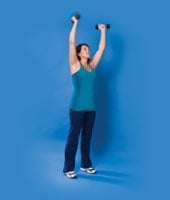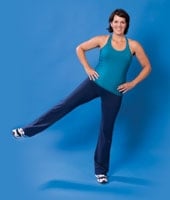
We should be aiming to somersault and perform back flips over the ground that we are above, no matter what age we are.
I remember one of my father’s favourite responses when people used to ask him, “How are ya, Jack?” It always made me chuckle when he’d reply, “Above ground.”
“Above ground” was one of many euphemisms used by my father, Jack. These “Jackisms,” as I called them, were always funny, somewhat sarcastic, and to the point. I enjoyed all of them, but I am starting to view his “above ground” response in a new and slightly more critical light.
What I’ve reconsidered is the suggestion that being above ground equates to being well. As we age, each of us should crave more out of life than merely breathing and being upright. We should be aiming to somersault and perform back flips over the ground that we are above, no matter what age we are. To do this, we need to maintain healthy habits to help guard against age-related diseases.
Age-related changes to the body
As we age, so do our muscles and bones. Over time our muscles begin to shrink and lose mass, which leads to a loss in strength, power, and response time. Our bones lose calcium and minerals and become thinner. Joints become stiffer and less mobile and the fluid that helps our joints glide smoothly together thickens, causing the cartilage to rub together and wear away.
This thinning of the bones and thickening of the fluid can lead to arthritis, an increased risk of bone breaks or fractures, deformation of the joints, overall height decrease because of the shortening of the bones in our trunk and spine, and changes to our gait and posture.
Strength training for healthy aging
There are countless ways to implement healthy habits for aging well and counteracting muscle and bone deterioration. One option stands out that is easy to implement, inexpensive, and safe for all ages—weight bearing exercise.
Weight bearing exercise, or more specifically strength training, can increase our quality of living, improve our mobility and balance, increase our muscle mass (not only making us stronger, but also making us better fat-burning machines), and build stronger bones.
Strength training—or any other exercise that requires us to support our own body weight—can not only slow the clock and the ravishing that time performs on our muscles and bones, but it can also build and strengthen them at whatever age we begin. Research has revealed that when an older adult performs strength training exercises at the appropriate intensities, he or she can elicit similar gains in their strength and power as younger adults.
What intensity should you be working at to fight Father Time? The American College of Sports Medicine recommends eight to 10 exercises working the major muscle groups of the body, for eight to 12 repetitions. Performed two to three days per week, you should start to see changes in your strength in four to six weeks.
A word about water exercises
Even though exercises performed in the water do not provide the same bone-building effects that exercises on the ground do, water is still a great dimension to incorporate. Regular swimming and water aerobic classes will build endurance, muscle strength, and cardiovascular fitness.
01 Squat with Shoulder Press
|
Muscles worked: deltoids, triceps, core, gluteals, hamstrings, quadriceps |
02 Stationary Lunge with Bicep Curl

Mucles worked: biceps, forarm extendors, core, gluteals, hamstrings, quadriceps |
03 Single Leg Balance Reach
|
Muscles worked: abductors, flexors, and extensors; foot and ankle supports |






